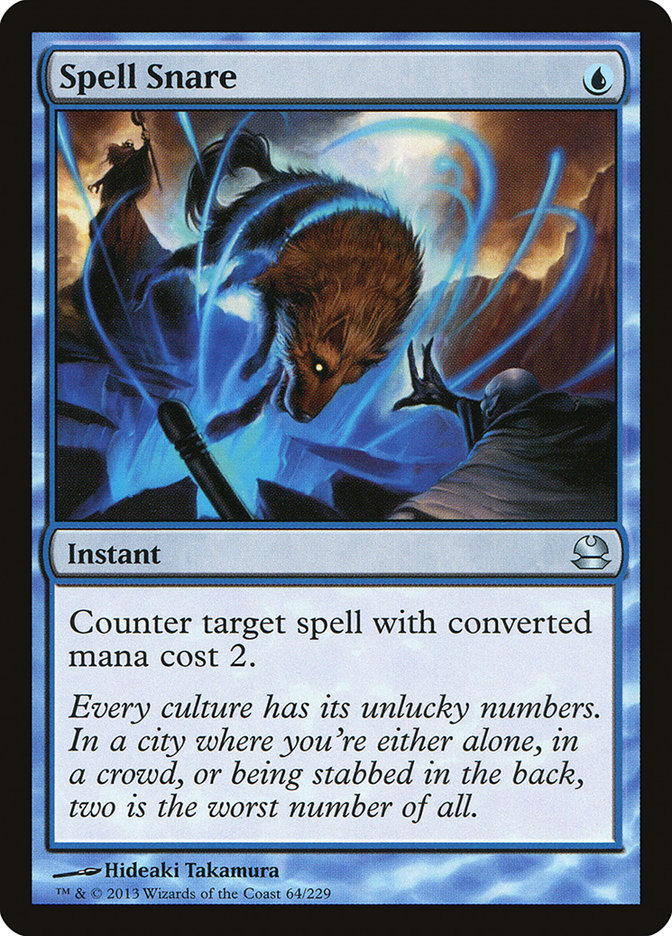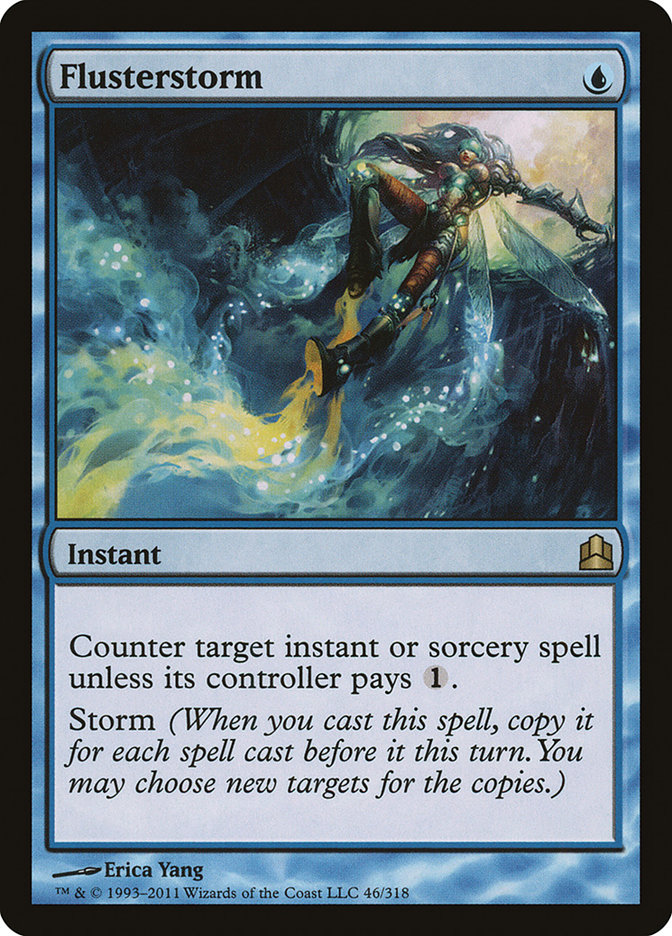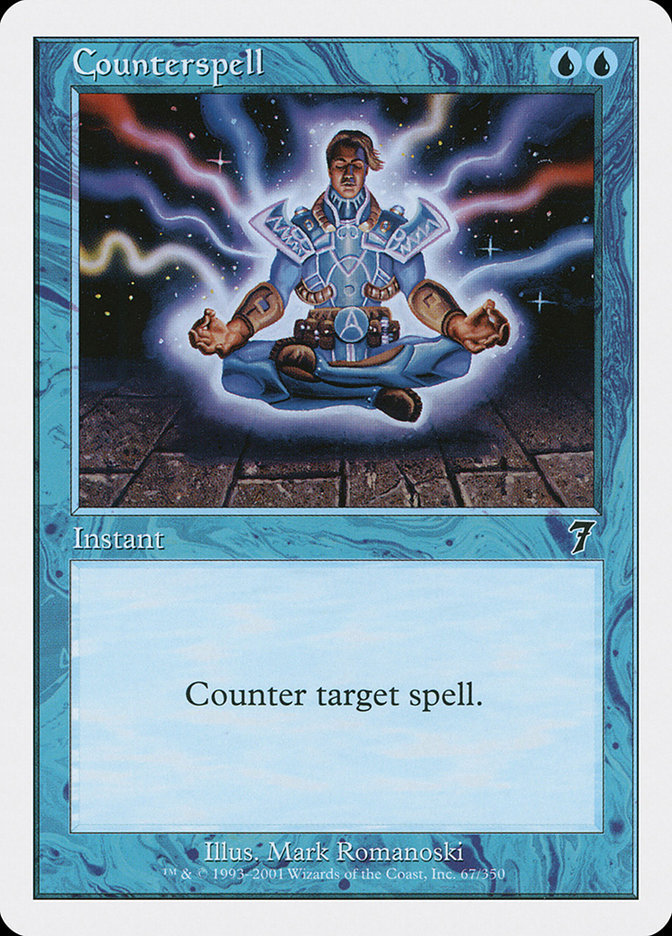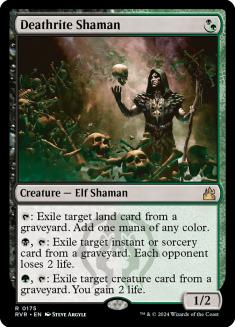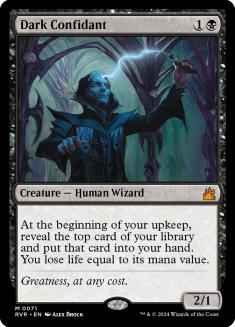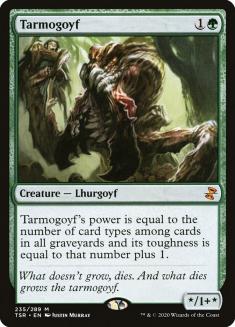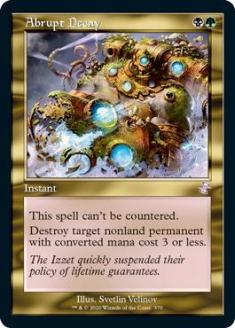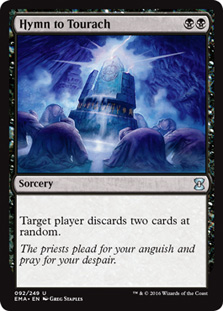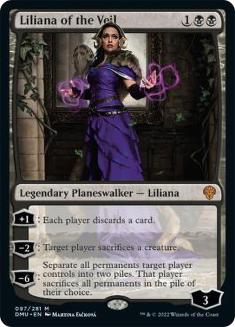Last week I discussed and played through two variations on a BUG Delver deck, one with Thoughtseize and True-Name Nemesis and the other with Hymn to Tourach and Tombstalker. While each version had their unique slots, the decks shared a strategic approach of disrupting and beating down with Insectile Aberration.
I found that approach lacking. Every other successful Delver of Secrets deck plays red, and it’s not hard to see why. Lightning Bolt is the peak of efficiency—it kills every one-drop, most two-drops, and some three-drops as well as goes upstairs when the game is close. Cards that directly reduce an opponent’s life total are well paired with creatures that cannot be blocked, so red has been a common complement to blue-based Delver of Secrets strategies of any formulation. You can add Tarmogoyf, Stoneforge Mystic, or Dark Confidant, but Delver of Secrets and Lightning Bolt just belong together.
When you play Delver of Secrets in BUG, it feels a bit kludge. It comes off as a sideshow to the deck’s real goal of attritioning an opponent out of cards. When you see Deathrite Shaman, Liliana of the Veil, Thoughtseize, and Abrupt Decay work in concert, it’s beautiful. When you see Delver of Secrets alongside that team, it feels like watching Christian Laettner try to play next to Jordan, Johnson, Ewing, and Bird.
When it became clear that True-Name Nemesis was similarly clumsy in a deck with Daze and no reach outside of Deathrite Shaman, I realized that the true power of black and green decks in Legacy has always been their capacity to disrupt and overwhelm. Modern has suffered under the oppressive glare of Jund attrition-oriented decks for months and months, and Deathrite Shaman’s recent banning may prove to open the format up a bit.
Here in Legacy we have the entire Jund shell intact and ready to go. We also have the game’s best consistency engine of all time: Brainstorm and Ponder. Why not combine the two and grind people out with a constant stream of powerful cards?
Creatures (13)
Planeswalkers (5)
Lands (22)
Spells (20)

Jarvis Yu discussed the theory behind this deck with me circa Grand Prix Denver back when everyone and their neighbor was playing some flavor of BUG. His idea was simple: cut the removal from Jund for a consistency engine. You lose more against beatdown, but you get much better sideboarded games and lose less to flood and screw.
His middle point—about getting better sideboarded games—is one that gets far too little press in discussions of cantrips in Legacy. Everyone heralds Brainstorm and Ponder as phenomenally powerful cards, but they don’t spend the time to tell the whole story behind why. It’s not just that you get flooded and screwed less with cantrips in your deck. The presence of cantrips allows you to use entirely different strategic pathways from those available to non-cantrip-wielding opponents.
Think of now obsolete Modern Jund. It was built on a template—you had your four-ofs, you had your flex slots that should cost this much and provide this effect, and you had your lands. There was no real reason to add a ton of one-ofs because you just wanted to be ruthlessly efficient and crush people with card quality. Breaking down four-of slots into one- and two-of slots would create inconsistency with a lot of downsides.
Now think of Legacy RUG Delver from a few years ago back when it played some number of Spell Snare, Spell Pierce, Flusterstorm, Thought Scour, Forked Bolt, Chain Lightning, Scavenging Ooze, and so on. After the baseline twelve creatures, eight free counters, and eight cantrips, the numbers could be messed with a lot. Why? Because cantrips allow you to reduce the downsides of inconsistency while increasing desirable inconsistency through deckbuilding.
What’s the difference between desirable and undesirable inconsistency? Imagine playing a one-of card in a non-control deck. We’re not talking about a solo Aetherling win condition style slot here; we’re talking about a card that is good in some situations and bad in others. Let’s say we want to play a one-of Grim Lavamancer in a tempo deck. Grim Lavamancer doesn’t have a great mana to initial damage ratio (it’s a Punishing Fire with suspend 1 for its first activation), but it more than makes up for that by paying out zero-card Shocks every turn for as long as you can feed it.
Grim Lavamancer is a card that is good in some places—against Deathrite Shaman, against small creature decks—and bad in others. You don’t want to draw Grim Lavamancer against combo for instance. Without cantrips in your deck, you’ll draw Grim Lavamancer an equal percentage of the time in all matchups. With cantrips in your deck, you’ll draw Grim Lavamancer less against combo and more against aggro since you see more cards per game while playing with cantrips in your deck. As a result, you get to reduce the downsides of Grim Lavamancer (bad against combo) and increase the upsides of Grim Lavamancer (good against small creatures). You increase the inherent inconsistency of your deck by adding a one-of card, but your decision to play cantrips lets you minimize the downsides of that decision and maximize the upsides.
Getting around to my original point about sideboarding, this can be extended to how people build sideboards in Legacy. When you have cantrips in your deck, there’s a higher ceiling for how much inconsistency you want in your deck. To use another example, you would rather Ponder into this:
Than this:
This increased tolerance for inconsistency pushes you to diversify your sideboard. Golgari Charm, Nature’s Claim, and Krosan Grip all do different things. Why play three of any given one when you can give yourself more options? As long as you’re playing enough of a given desirable effect, you’re not losing much by selecting two weaker versions of that effect, while you stand to gain quite a bit by broadening the scope of what your deck can do.
Cantrips fundamentally maximize powerful sideboards. When you play a bunch of powerful cards that interact with a lot of different parts of Legacy and you play cards that let you play those powerful cards more often, you get to leverage personal edges in metagame analysis, deckbuilding, strategic positioning, sideboarding, and gameplay. I’ll take those opportunities over "killing small creatures more."
So we know all of this stuff about cantrips and how great they are. We knew that they were great already—that’s why we want to play Delver of Secrets. Why aren’t we playing Delver of Secrets, Drew?
An excellent question, audience member rhetorical device. We aren’t playing Delver of Secrets because it’s not actually a good card in a deck that wants to play longer games of Magic. When you start putting eight-drops in your deck without any reanimation spells (even if they might someday only cost two mana), you’re squarely a midrange deck. Embrace it. Stop trying to convince me that you’re going to kill people on turn 5—you’re playing fewer instants and sorceries than other Delver decks; you have less removal; and you have fewer ways of preventing your opponent from drawing a removal spell, casting it, and killing your Insectile Aberration. In short, you’re a worse Delver of Secrets deck than other Delver of Secrets decks.
Stop trying to protect your creatures. Let them die and replace them. Find more, cast those, and win with those. Play creatures that are legitimately good on turn 7. Play more planeswalkers that are also legitimately good on turn 7. Don’t play a creature that if you get moderately lucky is a 3/2 flier on turn 8. That’s not what you want the fifteenth card of your deck to be.
Today’s small creature decks focus on getting ahead on board with Stoneforge Mystic, Equipment, True-Name Nemesis, and various other utility creatures. They focus a lot on card quality and not at all on card advantage. Jace, the Mind Sculptor and Dark Confidant have almost disappeared, replaced by Stoneforge Mystic and True-Name Nemesis. Planeswalkers accompanied by removal spells have been a traditionally strong foil to those decks.
This deck is capable of boarding in any number of a huge range of removal spells. My proposed sideboard has Golgari Charm, Engineered Explosives, and Drown in Sorrow as sweepers with Diabolic Edict and Maelstrom Pulse for spot removal. If you wanted to fight a specific approach, you could go heavier or lighter on any given aspect. Losing to Elves a lot? Play more Perishes. Losing to Batterskull? Play more Seal of Primordiums, Krosan Grips, and Nature’s Claims. Losing to fast combo decks? You can sideboard Force of Wills if you feel daring.
For all of this discussion of cantrips and sideboarding Force of Wills, this is very much a green and black deck touching on blue for cantrips. The core of the deck without a doubt is:
You may recognize most these cards as the core of Modern Jund. Those along with Hymn to Tourach provide a resilient and attrition-oriented way to fight strategies from Delver of Secrets tempo decks to Dark Ritual and Reanimate combo decks. Because you’re planning on playing a longer game, it makes sense to play both Thoughtseize and Hymn to Tourach, as neither spell is creating conflicts regarding your early game mana in the vein of "should I cast my disruption or my threat?" Indeed, this conundrum was a major part of why I don’t want to play Delver of Secrets in BUG anymore. Delver of Secrets is far worse on turn 3 than on turn 1, but you may be disrupting too little too late if you cast your first disruption spell on turn 3.
The mana base tension doesn’t end there. Like every other deck that plays Ponder, this is a deck that wants to cast Ponder on turn 1. Since RUG Delver plays fourteen turn 1 blue sources, that’s a comfortable baseline for our needs. But this is also a deck that plays Thoughtseize, Hymn to Tourach, and Liliana of the Veil, all black-intensive cards that want untapped black mana on time. What is a good model for this mana base requirement?
Creatures (17)
Planeswalkers (4)
Lands (24)
Spells (15)

Pat’s list plays more or less the same black spells that we do: discard spells, Dark Confidant, Abrupt Decay, and Liliana of the Veil. He has seventeen black lands and four Deathrite Shamans, so that seems like a good goal to shoot for.
What about green mana? We added a Scavenging Ooze so that we can have some play against Reanimator, fight opposing Tarmogoyfs and Deathrite Shamans, and have a fifth "Tarmogoyf" in BUG type mirrors where having the last big threat decides a lot of games. Scavenging Ooze wants a good amount of green mana. Let’s shoot to maximize our green mana after hitting our black and blue needs.
We want nine to eleven fetch lands, seven to nine dual lands, four Wastelands, zero basics, and up to two other utility lands. Since midrange decks with a lot of one- and two-mana spells and a minimal number of four-drops on the top end play 22 to 23 lands (Deathblade, Stoneblade, Bant, and so on), let’s aim for 22 (with four Wastelands of course) and keep our curve low, as we’re really only playing eighteen colored sources and four Deathrite Shamans.
To review:
14 blue sources
17 black sources
4 Wastelands
22 lands
So we can play one or maybe two non Wasteland nonblack lands. Those are going to be our Tropical Islands. We don’t want a ton of these since they don’t cast Hymn to Tourach or Liliana of the Veil, so we’ll stick with just one.
We have seventeen slots left, so all of them have to be black. Three of them do not have to be blue, so those will be Bayous.
3 Bayou
1 Tropical Island
4 Wasteland
We have fourteen lands left, all of which have to be both blue and black providers. Most of these will be fetch lands, and some of them will be Underground Seas. Since I want to have a bit of a better late game, let’s make one of those a Creeping Tar Pit.
3 Bayou
1 Tropical Island
1 Creeping Tar Pit
4 Wasteland
With thirteen lands left, we’re left with either four Underground Seas and nine fetch lands or three Seas and ten fetch lands. I don’t want to have only six fetchable lands in a deck that plans on going very long against Wasteland decks, so let’s stick to three Seas, making it ten fetch lands total.
Since the quantity of each doesn’t matter as long as they’re Misty Rainforest, Verdant Catacombs, or Polluted Delta, let’s keep costs low and max out on Zendikar fetch lands:
4 Misty Rainforest
4 Verdant Catacombs
2 Polluted Delta
3 Underground Sea
3 Bayou
1 Tropical Island
1 Creeping Tar Pit
4 Wasteland
And that, folks, is how you research and build a mana base.
The sideboard is another story entirely and one that as I mentioned earlier can change quite a bit depending on your local metagame and personal preferences. If I were to break things down by role, I would segment my proposed sideboard accordingly:
Anti-Swarm
1 Drown in Sorrow
1 Golgari Charm
1 Engineered Explosives
1 Diabolic Edict
1 Maelstrom Pulse
1 Submerge
Anti-Control
1 Golgari Charm
1 Flusterstorm
1 Notion Thief
1 Maelstrom Pulse
1 Krosan Grip
1 Pithing Needle
1 Sylvan Library
1 Vendilion Clique
Anti-Combo
1 Flusterstorm
1 Diabolic Edict
1 Tsabo’s Web
1 Notion Thief
1 Nature’s Claim
1 Pithing Needle
1 Grafdigger’s Cage
1 Vendilion Clique
I want to take a moment to talk about Tsabo’s Web. With the rise of Dark Depths, you want a way to advance your core game plan of disrupting and beating down with Tarmogoyf. The way that Dark Depths decks tend to fight Tarmogoyf decks is with Maze of Ith. Tsabo’s Web of course is a great way to shut off Maze of Ith while replacing itself. Against Lands decks that look more like Kurt Speiss’, Tsabo’s Web also does a ton of work against Rishadan Port.
Anti-Noncreature
1 Golgari Charm
1 Engineered Explosives
1 Maelstrom Pulse
1 Krosan Grip
1 Nature’s Claim
I’m a huge fan of diversifying your Naturalize effects. The idea for Nature’s Claim comes from two inspirations. First, it’s miserable to hold up a lot of mana to kill Batterskull with Krosan Grip. Second, if you want to kill Blood Moon, you can either hold up Abrupt Decay forever (vomit) or just have a Deathrite Shaman in play and a land in a graveyard. I know which one I prefer.
What do you like about the deck? What would you recommend I change before diving into the Magic Online two-player queues?

